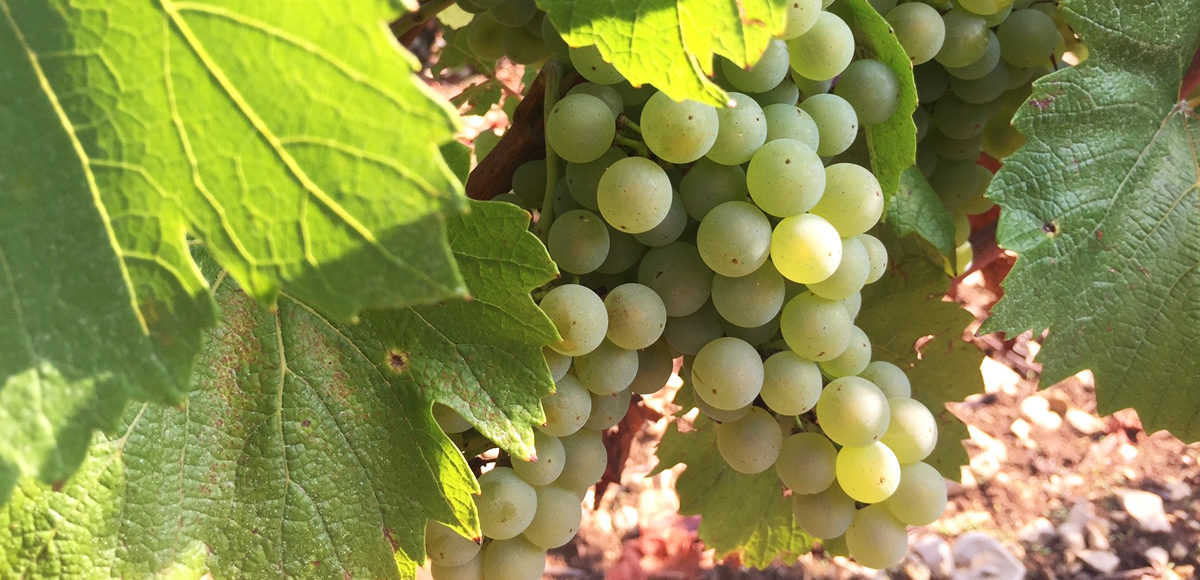“My philosophy is to make wine as naturally as possible. Simple, isn’t it?” — François Lequin
Domaine des Crêts is a partnership between François Lequin and Matthieu Ponson — two friends allied by a shared philosophy and an admiration for the wines of the Côte de Beaune. François was born into a family of vignerons in Santenay and has been the winemaker at Domaine Lequin-Colin since 1996. Matthieu was raised in Cornas, with a background in engineering, but went on to become a winemaker in the Vaucluse. When the two were introduced several years ago, they quickly realized they held the same passion for Burgundy and the same goal of purchasing vineyards in the northern Mâconnais and cultivating wines of Côte d’Or standards there. So, together, they took over the former Domaine Pascal & Sylvie Pauget and in 2014 made their first vintage as Domaine des Crêts. Today the domaine encompasses 4 hectares, with farming in conversion to organics. The emphasis on restricted yields, clay-limestone soils, native yeast fermentations, and deliberate must oxidation to ward off the bête noir of Burgundy — premox — show François and Matthieu’s vision is already translating into compelling reality. The animating idea is to grow and make a small range of great Mâcon chardonnay that balances minerality and richness. The results are elegant but approachable wines with no shortage of tension, vivacity, or length.
Region
The Mâconnais, tucked between the Côte Chalonnaise and Beaujolais, is a place of rolling hills and punctuating cliffs, still given over to mixed agriculture in a way that sets it apart from much of the rest of Burgundy. The region is divided into valleys, the Grosne to the west and the Saône to the east. The des Crêts vineyards are at 250-300 meters (820-980 feet) above sea level, within the “Mâcon-Chardonnay” commune, corresponding to the area between the villages of Lugny and Ozenay in the far north of the Mâconnais. Although the region enjoys a warmer, more generous climate than the Côte d’Or, it shares a similar soil profile, dominated by argilo-calcaire soils. The grape here is, of course, chardonnay — the commune is thought to be both the cradle and the namesake of the variety. “The vineyards became known thanks to [nearby] Cluny, as well as Citeaux, abbeys. The monks allowed for the advance of viticulture but also the visibility of the wines of Burgundy,” François notes.
The Winemakers
François and Matthieu had both wanted to be winemakers “since always,” says François. François was educated in Avize, Champagne, and then worked under David Ramey at Chalk Hill in California. In 1996, he returned home and started working at the family domaine, René Lequin-Colin, where the Lequins have been vignerons since 1673. Matthieu grew up in Cornas and graduated as a telecom engineer, but as soon as he had the opportunity to choose his profession in relation to his passion, he opted for winemaking. He’s a self-taught enthusiast who counts himself lucky to have François as mentor and partner.
Vineyards and farming
The estate is comprised of two parcels, l’Échenault de Serre at 2.3 ha and En bout at 1.6 ha. François notes “L’Échenault is lower on the hill, a bit riper, contains younger vines, and reveals more richness, ripeness, and texture. En bout is higher up, at 300 m.a.s.l., with more exposure to wind, less ripe fruit, and comprised of older vines; it tends to show more structure and mineral components – more elegance and complexity.” The soils are clay-limestone. Vine age averages 25 years for En bout, and between 5 and 25 years for l’Échenault. “In 2016, we planted over pinot noir to chardonnay, with a majority of massal selection and a few clones,” François relates. He and Matthieu undertook the conversion to organic farming in 2016. “Respect the environment and the natural cycle of the vine, limit interventions, and highlight the typicality of the soil” is how François defines their approach.
In the cellar
Although François aims to make the wines in Ozenay just as he does his 1er and grand cru wines in the Côte d’Or, he knows there are differences: “Getting ripeness is not difficult, keeping acidity is not easy,” he says of the Mâcon vineyards. “We decide to harvest by taste verified by acidity and pH, not by sugar level. Then, intervene as little as possible in the wines,” a philosophy that extends to work with native yeasts, full malo, and little added SO2. François is adamant that the grapes undergo a long and gentle press cycle, often between three and four hours, with frequent barrel rotations. He is also of the mindset that the juice must oxidize before undergoing fermentation to help combat premature oxidation (premox), the unfortunate and well-known complication that has affected countless wines, particularly white Burgundy, over the last decade or so. With energy and tension as the goals, François and Matthieu ferment in stainless under temperature control, perform battonage once a week throughout elevage, filter, and fine with clay. The wines then spend 11 months aging in oak (10% new). Side by side, En bout and l’Échenault are unmistakably distinct but share the common goal of balancing minerality and richness.












